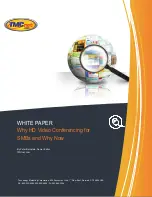
<DRB1306>
23
En/Fr
English
Fran
ç
ais
DJ player operation
Utilisation du lecteur DJ
Basic operation/Fonctionnement de base
Jog Dial Functions (*)
1. Using the jog dial during playback (Pitch bend)
÷
Rotating the jog dial during playback causes the speed to be
accelerated (when rotated in the FWD+ direction) or slowed
down (when rotated in the REV– direction) in accordance with the
degree to which the dial is turned.
÷
Once the jog dial is no longer being turned, playback resumes at
its original speed.
2. Rotating the jog dial during playback (Scratch play)
See page 24: “Scratch Play”.
3. Using the jog dial while playback is being paused
(Frame searching)
÷
Rotating the jog dial causes the player to begin searching in 1-
frame units.
÷
Rotate the jog dial at a fixed speed in the FWD+ direction for
playback at normal speed.
4. Rotating the jog dial after pressing the SEARCH
button while waiting for cueing (Cueing point
search)
Pressing either of the SEARCH button (
1
,
¡
) while waiting for
cueing causes the player to enter cueing pause mode, and rotating
the jog dial at this time causes the player to search for possible
cueing points. Pressing the CUE button after the player has
advanced or rewound to a new cueing point will then cause the new
cueing point to be entered into memory.
5. Rotating the jog dial while pressing the SEARCH
button during playback (Super-fast searching)
Rotating the jog dial in the direction you wish to search while
pressing the forward or reverse SEARCH button (
1
,
¡
) will cause
the player to enter high-speed search mode.
6. Rotating the jog dial while pressing the TRACK
SEARCH button (Super-fast track searching)
Turning the jog dial in the direction you wish to search while pressing
the forward or reverse TRACK SEARCH button (
4
,
¢
) will cause
the player to enter high-speed track search mode, with the direction
and speed of searching being adjusted in accordance with the
direction and degree in which the jog dial is turned.
Fonctions affectées au volant de commande (*)
1. Utilisation du volant de commande pendant la
lecture (modification de la hauteur du son)
¶
Quand vous tournez le volant de commande pendant la lecture, la
vitesse de lecture est accélérée (quand le volant est tourné dans
la direction FWD +) ou ralentie (quand le volant de commande est
tourné dans la direction REV –) en fonction du degré de rotation
du volant de commande.
¶
Dès que vous cessez de tourner le volant de commande, la
lecture se poursuit à sa vitesse d’origine.
2. Rotation du volant de commande pendant la lecture
(Lecture de travail)
Voir page 24 : « Lecture de travail ».
3. Utilisation du volant de commande en mode
d’interruption momentanée de la lecture
(recherche de trame)
¶
La rotation du volant de commande entame une recherche par
pas de 1 trame.
¶
Tournez le volant de commande à une vitesse constante dans la
direction FWD+ pour une lecture en vitesse normale.
4. Rotation du volant de commande après appui de la
touche SEARCH en mode d’attente de repérage (re-
cherche de point de repérage)
Quand vous appuyez sur l’une ou l’autre touche SEARCH (
1
,
¡
)
en mode d’attente de repérage, le lecteur passe en mode
d’interruption momentanée du repérage. Si vous tournez le volant de
commande à ce moment, le lecteur recherche les points de repérage
possibles. Appuyez ensuite sur la touche CUE après que le lecteur ait
avancé ou reculé jusqu’au nouveau point de repérage pour
mémoriser ce dernier.
5. Rotation du volant de commande avec appui de la
touche SEARCH en mode de lecture (recherche
ultra-rapide)
Si vous tournez le volant de commande dans la direction dans
laquelle vous souhaitez effectuer la recherche pendant que vous
maintenez la touche SEARCH (
1
,
¡
) avant ou arrière enfoncée, le
lecteur passe en mode de recherche ultra-rapide.
6. Rotation du volant de commande avec appui de la
touche TRACK SEARCH (recherche de plage ultra-
rapide)
Si vous tournez le volant de commande dans la direction dans
laquelle vous souhaitez effectuer la recherche pendant que vous
maintenez la touche TRACK SEARCH (
4
,
¢
) avant ou arrière
enfoncée, le lecteur passe en mode de recherche de plage ultra-
rapide en adaptant la direction et la vitesse de recherche à la direction
et au degré de rotation du volant de commande.
















































